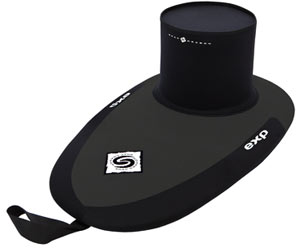Posted by Greg on
January 21, 2012
Welcome to the Q&A Page!
I’m happy to help answer your questions ranging from Greenland-style technique, making Greenland paddles, wing technique, Watertribe / ultra-distance kayak racing, kayak expeditions, kayak camping, surf kayaking and more.
I look forward to your questions! If you prefer for your question not to appear on my blog, please let me know and I’ll answer privately.
Please fill out the following form or email Greg.
cforms contact form by delicious:days
Q: I would like to get the most out of my forward stroke with a Greenland Paddle, but I have been told different things about how to use the GP. Most emphasize torso rotation. Some say it is better not worry too much about rotation, but instead to reach and lean slightly forward, insert the paddle, then pull and sit-up. Some say to take the paddle out at the waist, as with an Euro-paddle. Some say to pull the paddle all the way through the stroke. Is there a style best suited to the GP and a Greenland style boat that gives the most power for the effort?
— Tom in North Carolina
A: Tom, thanks for the question.
Before going into specific techniques, following are some general points to ponder. There is a lot of condensed information here, you may have to read this more than once. Read more... (2095 words, 1 image, estimated 8:23 mins reading time)
- Move the boat through the water, not the paddle. This is a huge mental change for most paddlers. Think of your paddle as an anchor that you plant into solid ground and then lever your boat forward using strong legwork and body rotation. When done properly you should be able to feel your paddle “load-up” with tension — it feels somewhat like you are suspended from the paddle, like hanging from a bar.
Q: I want a Snapdragon skirt that will be good for Fla paddling and rolling. I want something to seal well. Which Snapdragon do you recommend? I paddle a Force 5 and a rm Chatham 17….Thanks. Dave
A: Dave, For full disclosure, I’m a Snapdragon team paddler but I bought Snapdragon before I was sponsored, they make a great product.
I have multiple skirts that I choose depending on my activity/conditions. The most bombproof skirts are full neoprene, they are dry but also warm (not an advantage in the Florida heat).
If your priority is a solid seal (good for surf, rolling practice, rough water play, etc), then I recommend the Ocean Tour EXP Reinforced skirt; this neoprene skirt is dry and tough  enough for heavy surf zones. If I had to pick only one skirt, it would be this one. I used this skirt for paddling around Iceland where it withstood the nasty dumping waves of the South Coast without imploding. It works equally as well with the dumpers we have at Canaveral on the East coast. If you don’t need the heavy-duty rim guard and other extreme durability features then the Ocean Trek is a good choice, it’s just as dry. Read more... (414 words, 2 images, estimated 1:39 mins reading time)
enough for heavy surf zones. If I had to pick only one skirt, it would be this one. I used this skirt for paddling around Iceland where it withstood the nasty dumping waves of the South Coast without imploding. It works equally as well with the dumpers we have at Canaveral on the East coast. If you don’t need the heavy-duty rim guard and other extreme durability features then the Ocean Trek is a good choice, it’s just as dry. Read more... (414 words, 2 images, estimated 1:39 mins reading time)
Q: I have read different things about how to find the best length for a Greenland paddle and some of the methods result in very different sizes. Is there a traditional method to find the exact paddle size. Thanks! — Confused in Portland
A: Hello “Confused”. Greenland paddle sizing is usually done using anthropometric measurements. This type of measurement takes into account body sizing, and can be done directly, without a tape measure.
For the measurements below, an “armspan” refers to the full reach of your outstretched arms, from the extended fingertips of one hand, to the other. Read more... (455 words, 0 images, estimated 1:49 mins reading time)
- The most commonly-used method for touring is one armspan , plus a cubit (the distance from your elbow to your extended fingertips).
- For competition rolling, and kayaking in very windy areas, you may want a slightly shorter paddle — a common length is an armspan plus the distance from your wrist to your fingertips. A shorter paddle is easier to maneuver both underwater and in a strong wind.
- For a very short paddle used with a sliding stroke (often called a “storm paddle”), the length is short – one armspan, with the loom only two or three fists wide.

